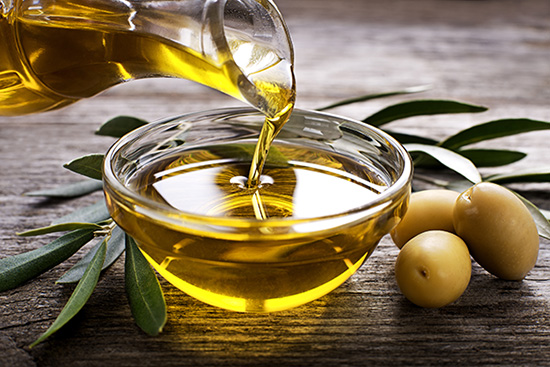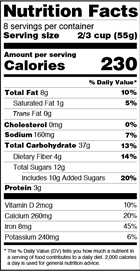
It is necessary for our bodies to consume dietary fats. Fat functions in many ways within our bodies. It plays an important role in cell function, in protecting our organs, in nutrient absorption and is used for hormone production. Fat also helps to keep us satisfied, or satiated, for longer after consuming a meal or snack.
Why is everyone so afraid of fat? Fat contains 9 calories per gram. In comparison, both protein and carbohydrates contain 4 calories per gram. Fat is more than double the amount of calories for a portion half the size. Therefore, fat should be used sparingly. Even if you are consuming a healthy source of fat, you may be consuming too many calories per serving for weight maintenance or weight loss. There are different types of fats, some are better for our bodies than others.
TYPES OF FAT
Saturated Fat: These types of fats are generally solid at room temperature. You can think of these fats as your “artery clogging” fats. They can safely be consumed in small amounts. The Dietary Guidelines for Americans recommends limiting saturated fat intake to no more than 10% of your total calories. If you are taking in a 2,000 calorie diet your saturated fats should be no more than 22 grams per day. If you are post op and are closer to 1,000 calories a day, you should consume no more than 11 grams per day.
The following are all sources of saturated fat:
- Animal fat (Beef, pork, lab, poultry)
- Lard and cream
- Butter
- Cheese
- Ice cream
- Coconut oil
- Palm oil
Trans Fat: Trans fats can occur naturally in small amounts in dairy or meat products. Trans fats are also created artificially by adding hydrogen to liquid fats to make them solid. They do this to produce a spreadable product. Trans fats are often used for frying because they typically can be reused which helps restaurants to cut costs. Your intake of trans fats should be as close to 0g per day as possible.
The following are common foods that contain trans fats:
- Packaged doughs such as biscuits and rolls
- Margarine
- Shortening
- Non-dairy coffee creamer
- Microwave popcorn
- Prepackaged baked goods
- Fried foods
- Some frozen pizzas
Unsaturated Fat: I like to think of saturated fats as our “artery lubricating” fats. Though fat should always be used sparingly, the fats we want to have more frequently would be our unsaturated fats. The Dietary Guidelines for Americans recommends limiting total fat intake to 27 grams per day based on a 2,000 calorie diet, and 15 grams per day based on a 1,000 calorie diet.
The following are all sources of unsaturated fat:
- Olive oil
- Peanut butter and peanut oil
- Vegetable oils: sunflower, safflower, corn, or canola
- Fatty fish: salmon, tuna, sardines and mackerel
- Avocados and avocado oil
- Nuts and seeds: Almonds, peanuts, sunflower seeds and cashews
LOOK AT THE LABEL
You can figure out how much fat is in a food item by looking at the food label. The food label will show you total fat, saturated fat, and trans fat. To determine the amount of unsaturated fat, you would take the amount of total fat, in this case 8 grams, and you would subtract the amount of saturated and trans fat. This label is for a food that contains 7 grams of unsaturated fat.
CHOLESTEROL
Cholesterol is a wax-like substance found naturally in our bodies. Cholesterol is used in hormone production, to produce vitamin D and aids in digestion. Chances are you know someone who has high cholesterol. Someone may have high cholesterol for reasons that are not related to dietary habits, however, the food we eat can raise, or lower, our cholesterol levels. If we have too much cholesterol in our bodies, it can build up in our arteries. The narrowing of our arteries makes it difficult for blood to flow easily. Too much cholesterol, or plaque, in our arteries can cause a blood clot, stroke, heart disease or a heart attack.
The following factors put you at higher risk of developing high cholesterol: family history and genetics, increasing age, certain medications, obesity, a diet high in saturated or trans fats, inactivity and smoking.
Soluble fiber can lower bad cholesterol (LDL & VLDL) levels. Soluble fiber turns into a gel-like substance and binds to cholesterol, which decreases the amount that we absorb through our food. Good sources of soluble fiber include oats, peas, beans, apples, citrus fruits, carrots, barley and psyllium.
Foods with added plant sterols and stanols work similarly to bind with cholesterol to decrease the absorption. Fruits, vegetables, beans, nuts, seeds, and some vegetable oils naturally contain plant sterols and stanols.
Saturated and trans fats raise bad cholesterol (LDL & VLDL) levels. Foods to avoid would be fatty meats, butter, full fat-dairy, many commercially processed baked goods, margarine and hydrogenated vegetable oil.
Written by: Gigi Ravenhall, RDN
References:
https://www.heart.org/en/healthy-living/healthy-eating/eat-smart/fats/dietary-fats
https://www.dietaryguidelines.gov/
https://www.eatright.org/health/wellness/heart-and-cardiovascular-health/what-is-cholesterol









